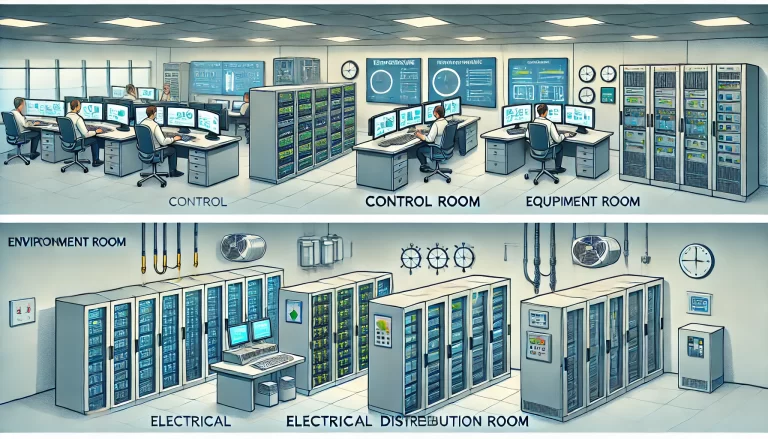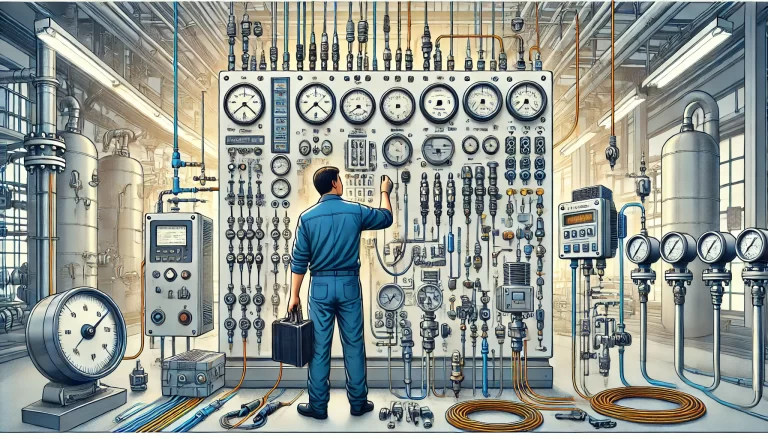I. Instrumentation Engineer
1. Design and Planning
- Participate in developing instrumentation system design plans based on project requirements. Factor in process needs, safety standards, and cost control.
- Select appropriate instruments by evaluating reliability, precision, and compatibility with the intended application. For instance, in a petrochemical plant, selecting flame-proof instruments for hazardous areas ensures safety compliance.
- Prepare detailed technical drawings, including schematic diagrams, wiring diagrams, and installation layouts. Ensure all designs adhere to industry standards such as ISA or IEC.
2. Installation and Commissioning
- Supervise the installation of instrumentation systems to guarantee compliance with design specifications and installation protocols. For example, ensure the proper alignment of flow meters and secure mounting of pressure transmitters.
- Conduct system commissioning, including calibration and parameter configuration of instruments. Address issues like signal interference or incorrect readings during calibration to ensure system accuracy and reliability.
- Collaborate with electrical and mechanical engineers to ensure seamless integration of instrumentation systems with other engineering systems.
3. Maintenance and Troubleshooting
- Develop preventive maintenance schedules to minimize downtime. For example, schedule quarterly calibrations of temperature sensors to maintain process consistency.
- Analyze and resolve equipment failures, such as diagnosing sensor drift in thermocouples or wiring faults in PLC systems. Provide quick solutions to avoid production delays.
- Maintain detailed records of instrument performance, including maintenance logs and fault analyses, to support decision-making for equipment upgrades.
4. Technical Support and Training
- Provide on-site support for operations staff, addressing issues like incorrect readings or alarm malfunctions. Ensure proper operation of systems through hands-on guidance.
- Organize training sessions for new employees on the principles and operation of specific instruments, such as DCS (Distributed Control Systems) and SCADA (Supervisory Control and Data Acquisition).
- Stay informed about the latest advancements in instrumentation technology and propose upgrades, like transitioning to wireless sensors for enhanced data accessibility.
5. Project Management and Coordination
- Oversee project timelines, ensuring milestones like design completion, installation, and commissioning are met on schedule.
- Communicate effectively with contractors, suppliers, and internal departments to resolve challenges during project implementation, such as delays in equipment delivery.
- Develop and refine procedures and workflows for instrumentation management, enhancing operational efficiency.

II. Instrumentation Administrator
1. Instrument Management
- Maintain a comprehensive equipment inventory, detailing specifications, installation dates, calibration intervals, and maintenance history.
- Design and implement maintenance plans, ensuring timely cleaning, calibration, and inspection of devices like pressure transmitters and flow controllers.
- Monitor repair progress for malfunctioning instruments, ensuring quality standards are met and lessons learned are documented to prevent recurrence.
2. Technical Oversight
- Gain proficiency in the operating principles and parameters of a wide range of instruments. Provide practical demonstrations to operators, such as the correct procedure for recalibrating gas detectors.
- Research and recommend new technologies, such as adopting smart sensors for enhanced data accuracy and ease of integration into existing systems.
3. Quality Assurance
- Schedule periodic calibrations to meet industry and regulatory standards. For instance, ensure weighing scales in food processing plants are compliant with legal-for-trade certifications.
- Audit newly installed instruments for quality and performance compliance before commissioning.
4. Safety Compliance
- Implement safety checks for instrumentation in hazardous environments, ensuring flameproof or intrinsically safe equipment adheres to ATEX or other relevant standards.
- Train team members on emergency procedures and the use of protective devices to mitigate risks in high-voltage or high-temperature environments.
5. Documentation and Reporting
- Compile and update technical documentation, such as operation manuals, calibration certificates, and troubleshooting guides.
- Prepare periodic reports on equipment performance and maintenance trends for managerial review, including recommendations for future investments.

III. Instrumentation Supervisor
1. Team Leadership
- Allocate tasks based on team members’ expertise, ensuring efficient execution of routine checks and emergency repairs.
- Conduct regular performance evaluations and provide feedback to foster skill development among team members.
2. Technical Problem-Solving
- Analyze and resolve complex issues, such as diagnosing irregular signal outputs from control valves or identifying faulty connections in telemetry systems.
- Lead troubleshooting efforts during unexpected breakdowns, ensuring rapid recovery of critical systems.
3. Safety Enforcement
- Develop and enforce safety protocols, such as ensuring proper lockout/tagout procedures during instrument maintenance.
- Organize regular safety drills and workshops to enhance the team’s emergency response capabilities.
4. Equipment Oversight
- Monitor equipment life cycles and recommend replacements before failures occur. For instance, track corrosion levels in sensors used in corrosive environments.
- Coordinate with suppliers to procure spare parts or replacement equipment, ensuring minimal disruption to operations.
5. Interdepartmental Collaboration
- Maintain open communication with production, quality, and maintenance teams to align instrumentation activities with overall operational goals.
- Work closely with project managers and engineers during upgrades or expansions, providing insights into instrumentation needs and potential integration challenges.

Results-Oriented Approach
To measure the success of these responsibilities:
- Use KPIs such as system uptime, calibration compliance rates, and incident response times.
- Conduct regular audits to identify and address inefficiencies.
- Foster continuous improvement through feedback loops, including post-maintenance reviews and project debriefings.
